Last Updated on March 12, 2025 by Michelle
You’ll find everything mentioned in this article–and a lot more–covered in even greater detail in this episode of the Simple Doesn’t Mean Easy podcast, recorded with renowned salt expert, Darryl Bosshardt: The Ultimate Guide to Salt & 3 questions you need to ask (S7, E1)
The Ultimate Guide to Salt
Read on for an outline of many of the questions we dive into in this episode that is truly the Ultimate Guide to Salt.
Listen in to the full episode or watch on YouTube, to also find out:
- What salt has in common with maple syrup. (It’s not what you might think.)
- Why the Dead Sea in Israel can’t be used as food salt. (Turns out it’s not sodium chloride, but mostly magnesium chloride.)
- Why it’s important to understand that refined table salt removes all the potassium that naturally occurs in salt. (Spoiler alert: our bodies requires potassium to process sodium. So it’s a no brainer that we should want a real salt that comes with potassium, yes? Redmond Real Salt has potassium, as well as 60+ other trace minerals.)
Should we eat less salt?
Growing up in the 80s & 90s I remember doctors always scaring my mom, warning her that she had to eat less salt. Why was there an anti-salt craze in the medical community?
This study in 1954 was the beginning of the anti-salt craze, when rats were fed copious (I’m talking insane) amounts of salt.
But the truth about salt is:
- Every early society grew up around a salt deposit, because it was needed to preserve food and it was always a necessity for farm animals.
- Our tears, sweat, and urine are all salt.
- Our body functions and cleanses itself on salt.
- Every religious text we have on record mentions salt.
- Roman soldiers were even paid in salt.
- Salt is given in every IV or our cells would rupture.
So, in the end, salt has always been a necessary (and good) part of a person’s diet until modern times.
Some big differences in salt today? Most modern salt is processed, demineralized, and then altered with additives and chemicals.
Bleck. But read on my friend… there is a better way!
What are the different types of salt?
Essentially, all salt that we use to flavor our food falls into one of 3 categories, depending on where it is sourced:
- Sea Salt… taken from the oceans (2-3% salt). There are many unique challenges with these salts, and the salt may contain pollutants.
- Salt taken from ancient salt deposits (Himalayan or Bolivian or Redmond’s)
- Sodium-Chloride-based Dead Sea salt, like the Great Salt Lake.
Of course, there are many varieties and brands available that fall into one of these 3 categories. Here’s a breakdown of how the most common salts compare:
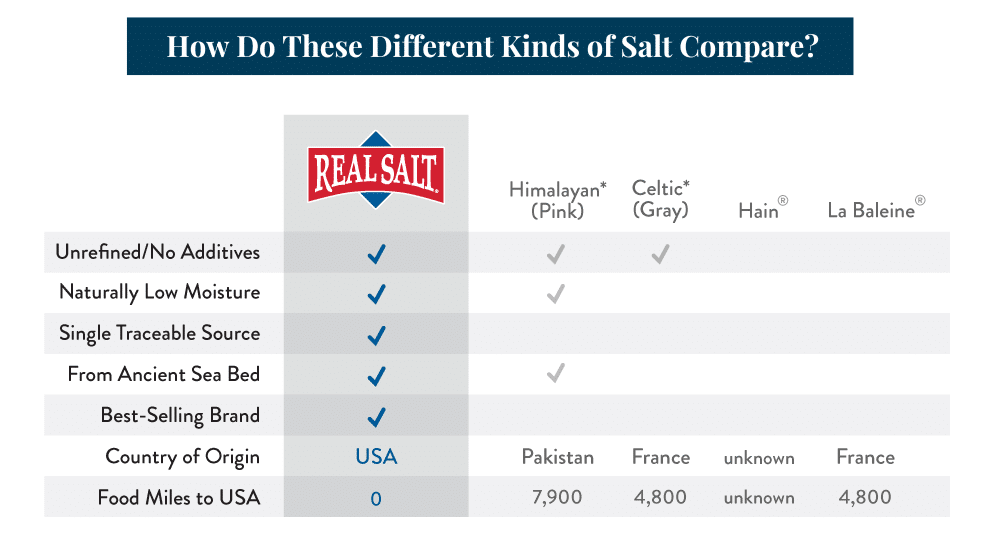
How is salt mined?
If you compare table salt being mined in the Chicago area to real salt mined in Utah, they are mined in two very different ways:
- Solution Mining and Vacuum pan evaporation (used by Morton’s Salt). This method is used when deep drilling is necessary and the area is flushed with fresh water. Then the salt water is extracted to the surface and treated with many chemicals that result in the white table salt everyone is familiar with.
- Surface extraction (used by Redmonds Real Salt). This can be done when salt deposits are found close to the surface and no drilling or flushing is necessary.
Is salt hygroscopic?
Yes, salt is hygroscopic, which means it absorbs moisture from the air around it. This is vital to our bodies, since salt regulates the inner- and extra-cellular fluids. It impacts our ability to interact with and retain moisture, so people and animals crave both salt and water, to balance our body’s essential fluids.
Why does a salt lamp leak water?
I’ve been frustrated for years that every summer, in our humid New England climate, my salt lamps have turned to puddles of water. I had no idea why, but after a few years of throwing away my “melted” salt lamps and replacing them just to see it happen again, I gave up. It turns out they will do this in any humid environment, because the salt is absorbing the moisture from the air.
Many decades ago scientists studied how to coat salt crystals with chemicals to stop its hygroscopic nature, to help it not clump up in your salt shaker.
So today on most salts you purchase (even sea salts) you will see chemicals in the list of ingredients, such as sodium silicate illuminate and copium glycol, just to name a few.
I don’t know about you, but I’d much rather just give my salt shaker a few taps on the table to loosen it up than eat salt in which every granule is coated in a chemical. Better yet, I add a few grains of rice to my salt and I’m good.
What does “when it rains it pours” mean?
“When it rains, it pours” was a tag line to market table salt after scientists figured out how to add chemicals to table salt to prevent it from clumping, so when it rains (aka when it’s humid), the salt can still pour out of the salt shaker (aka doesn’t clump in the jar).
While the add with the cute little girl and her umbrella was a great marketing campaign, I’m not a fan of chemical-coated salt, thank you…
Is sea salt always good?
While the name “sea salt” has a nice appeal to it, sadly it doesn’t really mean much…
It turns out any salt can be defined as “sea salt,” because all salt was in a sea somewhere, once. Some countries (Canada and Japan) will regulate this and require that salt must be coming from a current ocean to be labeled “sea salt.”
But sea salt can be highly refined.
Sadly, it is NOT natural simply because it is labelled “sea salt.”
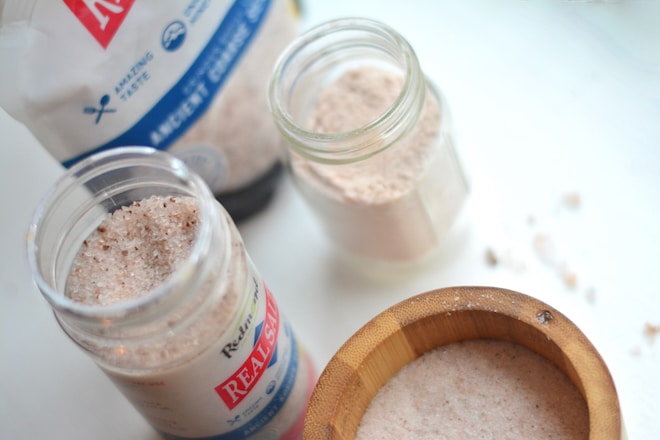
Why is it important to know your salt?
If you are looking to use the best, all-natural salt (preferably just salt, with no junk added), you need to know a little about your salt.
Ask these 3 questions about your salt:
1. Who is producing the salt?
It’s always important to trace to the source of your salt (or any food), whenever possible. If you know this you can ask the next question:
2. What is the source?
Just like you’d like to know if you produce is organic and grown miles away from pesticides or GMO crops, you should make sure your salt is as it was mined in nature. Has it been mingled with other things in the open market before being sold to the consumer?
3. What is the process?
Are they taking anything out? Are they putting anything in? Is your salt coming to you the way it existed in nature or has it been refined and laden with chemicals?
Are salt substitutes safe?
I personally would avoid salt substitutes at all cost. Not only does table salt have too many chemicals for me, but salt substitutes are even worse. (Funny for a product that is suggested to you by medical professionals as a “healthy alternative,” no?)
But salt substitutes are salt with chemicals added to lessen the sodium amount. Look at the labels and you’ll see this warning: “This substitute is for normal,healthy people. Consult your general practitioner before use.”
I’m no expert, but it sure seems to me that salt substitutes would be harder on your heart and body than any natural salt.
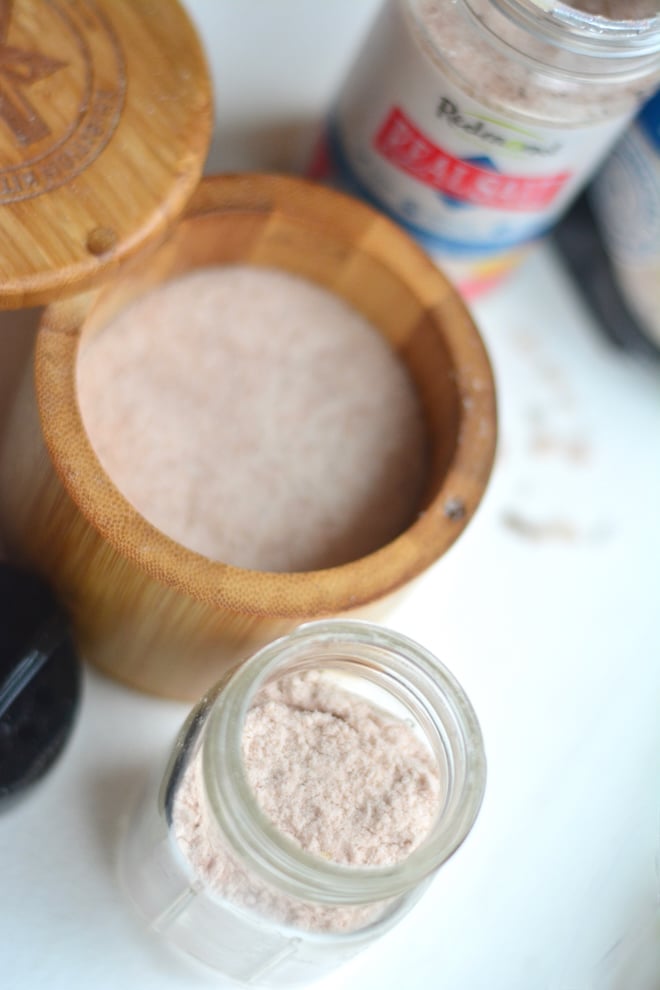
How much salt should you have a day?
The official daily recommended amount of salt is 2300 mg. (or about 1 tsp).
But many medial experts agree today that it’s a better policy to salt your food liberally and then also add 1/4 tsp of salt to every quart of water you drink. Especially if you’re using an all-natural salt like Redmond Real Salt.
What is the best thing to stop sugar cravings?
We oftentimes think we’re craving sugar when our body is actually craving salt. Pretty weird, right? But maybe this is why there’s been an age-old dilemma of sweet vs. salty… because the right answer is “both.”
You can often place a piece of salt under your tongue to push off a sugar craving. Try it. And get back to me if you too find this to be pretty magical.
Is salt a natural source of iodine?
Yes, salt does naturally have iodine. Regular, totally natural (NOT iodized) salt has about 10% of the daily requirement of iodine per quarter tsp.
Why is iodine added to salt?
Iodine is essential for health. And a bad thyroid problem can result from an iodine deficiency.
During the draft for WWI, in the midwest, there was a limited supply of fresh seafood, which is the biggest source of iodine for most people. In addition to that, refined sugars and processed foods had become very popular. So when the U.S. military discovered many men weren’t qualifying for the draft because of this problem–which led to a lower number of recruits available in the midwest–the U.S. government began to research how they could force iodine consumption. Not unlike the way many municipalities across the country add fluoride to water, the U.S. government decided to add iodine to a food source.
Salt was not the first choice; they considered adding iodine to flour or water, but it turned both flour and water a reddish purple color, since iodine is purple. They discovered it could be added to salt and remain stable, and, since salt was a necessary ingredient in everyone’s diet, it enabled a forced iodine consumption.
Then they required all salt manufacturers (and they still do today) to add a warning to their product if they did not add additional iodine.
But, guys, salt was NEVER supposed to be a natural source of iodine.
How much iodine is in iodized salt?
In 1/4 tsp of iodized salt you’ll find 45% of your daily recommended amount of iodine.
But–this is what no one tells you–less than 10% of that 45% iodine is actually bio available when it’s attached to salt.
Ummm, what!?
How can you prevent iodine deficiency?
To prevent an iodine deficiency, simply seek out foods rich in iodine (like seafood and mozzarella cheese), or find a good iodine substitute.
Other tips?
Remove or reduce halogen exposure by having a good water filter.
Stop using toothpaste with flouride. Usean all-natural option that remineralizes your teeth! Go here to see my absolute favorite.
Avoid enriched flour, which is enriched with bromide. While bromide is a flour conditioner/volumizer, enriched flour is also an iodine inhibitor!
Sidenote: Dairy products are some of the best sources of bioavailable iodine. So the lesson here? Your family needs a weekly pizza night, and you need this homemade pizza recipe for dough made with fresh ground flour.
And go here to dive into all my free resources on fresh flour.
Can I make an iodized natural salt myself?
You can absolutely make a naturally iodized salt. Simply mix up an all-natural salt (this is the only one I use) with 10% dulce powder (it’s a gorgeous purple color btw because of the iodine in it… cool, right?) and 90% Redmond Real Salt (more than 10% seaweed will taste too much like seaweed).
Then use this salt freely in place of table salt. You’ll have an all-natural source of iodized salt.
Can I make a homemade electrolyte drink?
Rather than using a commercial, processed sports drink, loaded with artificial flavors and artificial colors, you can make your own electrolyte drink!
Recipe for DIY Electrolyte Drink
INGREDIENTS
1 quart of water
1/4 tsp real salt
squeeze of lemon
a little bit of your favorite sweetener
DIRECTIONS
Mix and enjoy!
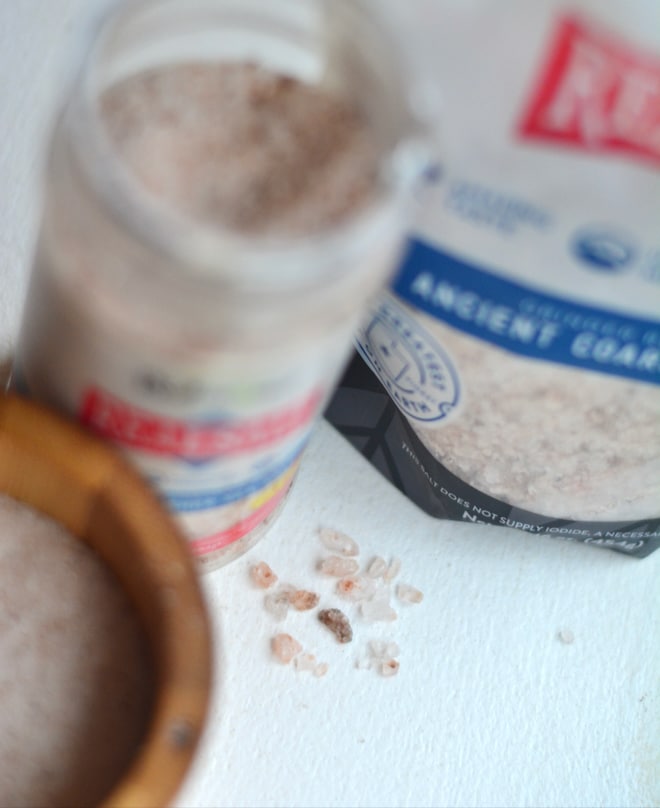
What are some of the many sizes of salt crystals you can purchase?
- Coarse or grinder salt: This coarseness of salt is the large granules pictured above. You’ll need to have a salt grinder to use coarse salt, grinding it like you would a pepper grinder.
- Kosher-size salt: Kosher salt is not called that because it has been deemed appropriate for consumption by a jewish rabbi. Kosher salt is a certain size of salt (a coarseness between coarse and fine) that is proper size for pulling moisture out of meat in a way that makes it appropriate for kosher use. It can also mean that the facility is approved by the Jewish community and therefore appropriate for use in that style of cooking. I use this kosher salt for making DIY Everything Seasoning, topping warm baked pretzels, seasoning anything where I want a real “pop” of salt taste, and cleaning my cast iron pans.
- Fine: This is the average size of salt crystals that we’re all used to the most–the typical size for average salt shakers. This one is the common size, for everyday use and the one I buy in bulk, right here.
- Powder: This salt size is an extra-fine powder. It should be used sparingly on foods or you’ll find things taste super salty. I love it for popcorn. In fact, you can buy it specifically as popcorn salt. It sticks to your popcorn better.
Check out my family’s “recipe” for our favorite way to fix popcorn right here, at the bottom of my list of all my favorite ingredients (just scroll to the bottom at this link): How I Make Popcorn
All four options are pictured below, with coarse on the top (in the blurry backgrond), then kosher, fine, and powder at the bottom.
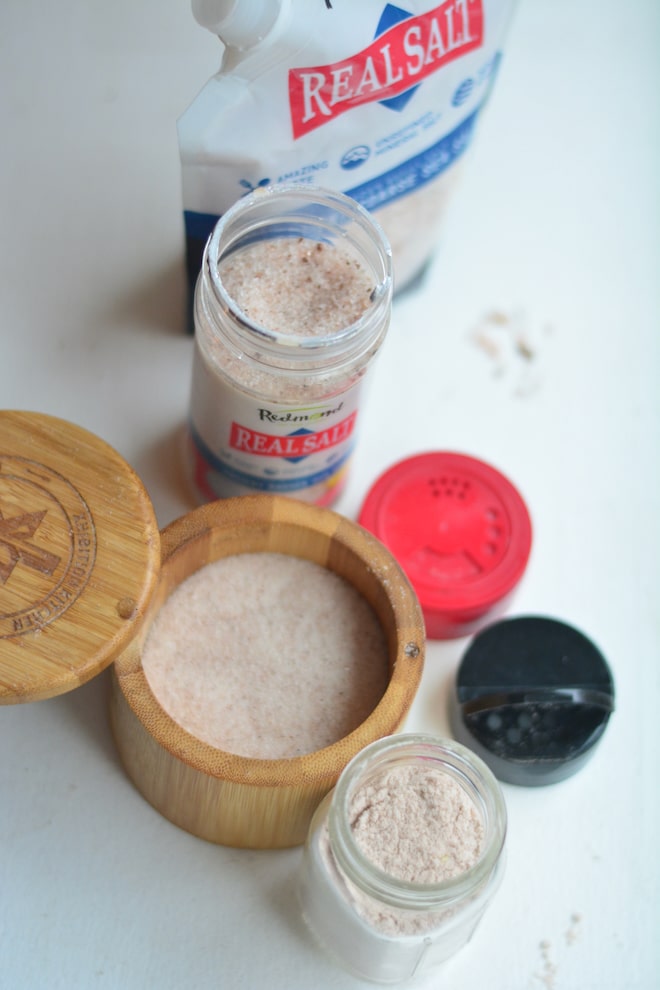
What is the best way to store salt in bulk?
Call me crazy (I’m fine with that), but I always buy my salt in bulk.
I buy this 25-pound bag of Real Salt –enjoy big savings when you stack the bulk savings with my exclusive code SOULYRESTED–and it makes me super happy every time that this is delivered to my front porch. It never, ever goes bad and I can get the really GOOD stuff at the best price that way. To make sure it doesn’t clump in storage, I just add some bags of rice. I will fill multiple loose leaf tea bags (like these) with salt, secure them with twine, and disperse them throughout the bucket as I fill it with the salt.
I will replace these bags, with fresh rice, every year or so if my bucket still has salt in it. (I find we go through a 25-pound bag of salt every 2-3 years.)
I then use these lids so the bucket has a tight seal, yet it’s super easy to access when I need to refill my salt shakers and bowl.

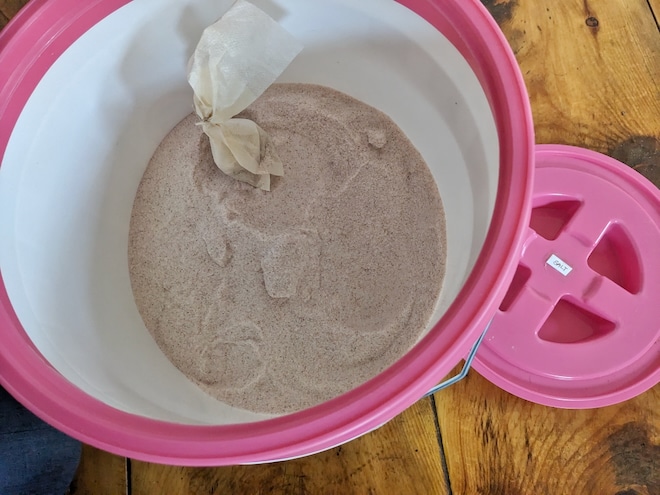
What are the best salt products I buy?
GO HERE to find my Top Ten favorites, or see a few below. These are the salty things I’m never without in my pantry.
Click on any image to learn more & always use code SOULYRESTED to save 15% off (and yes, you can stack that savings with the already amazing bulk savings on some of these salty wonders).
What are some good books about salt?
Dive into these books if you’d like to delve even more into the fascinating world of salt:
Your Bodies Many Cries for Water
Do all farm animals need salt?
All mammals need salt. Farm animals are no different than humans in their requirement for salt.
Livestock need the right balance of salt in their diet to ensure the functioning of their immune systems and to spread nutrients across their cells.
So we make sure to supplement our pig’s feed with this salt. (Just a little bit goes a very long way.)
And we leave a special water bowl out for our free-ranging chickens that has been supplemented with just a little bit of this salt, as well as this conditioner. They always have access to plain water as well. They know if they need the salt and/or conditioner on any given day and gravitate naturally to the best water for them.
Podcast Feedback
While this article briefly mentions a lot of the points of my recent chat with salt expert, Darryl Bosshardt, join in our conversation and dive into the fascinating world of salt even more right here: The Ultimate Guide to Salt & 3 questions you need to ask (S7 E1)
Or listen right here:
Did you enjoy listening to this episode? Please take a quick second to leave a review to let us know. This will help others learn about this podcast. Plus, I genuinely appreciate the feedback!
Just click on “Listen on Apple Podcasts,” then scroll down under “Ratings & Reviews” and click “Write a Review.”
If you don’t have an iphone, you will need to be on a desktop to see the “Listen on Apple Podcasts” option.
More info you’ll find fascinating:
- Listen in while we Debunk 3 Myths About Salt (episode 147)
- Or join in on youtube to Debunk 3 Myths About Salt with Darryl Bosshardt
- DIY Everything Seasoning
- Make Homemade Switchel (a natural electrolyte drink)
- 5 healthy drinks you need
- Download my complete Pantry Checklist, which includes all the best salt, of course.
“Salt is good, but if it loses its saltiness, how can you make it salty again? Have salt among yourselves, and be at peace with each other.” Mark 9:50
Pin this for later!
Click on the image below to pin this post.
Find out why SoulyRested was considered to be one of the One of the Top Homesteading Blogs.
Glance at my Resource Page if you’d like to get a glimpse of all the supplies I use and recommend for everything from gardening, to homeschooling, to chicken care, to nature journaling, to maple syrup making.


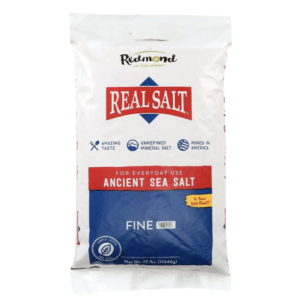
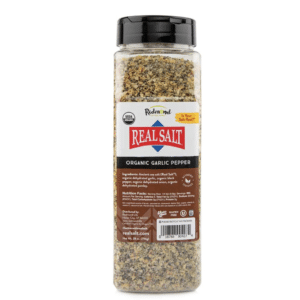
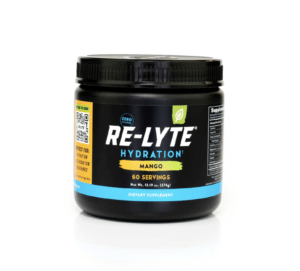
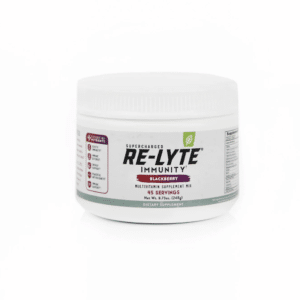
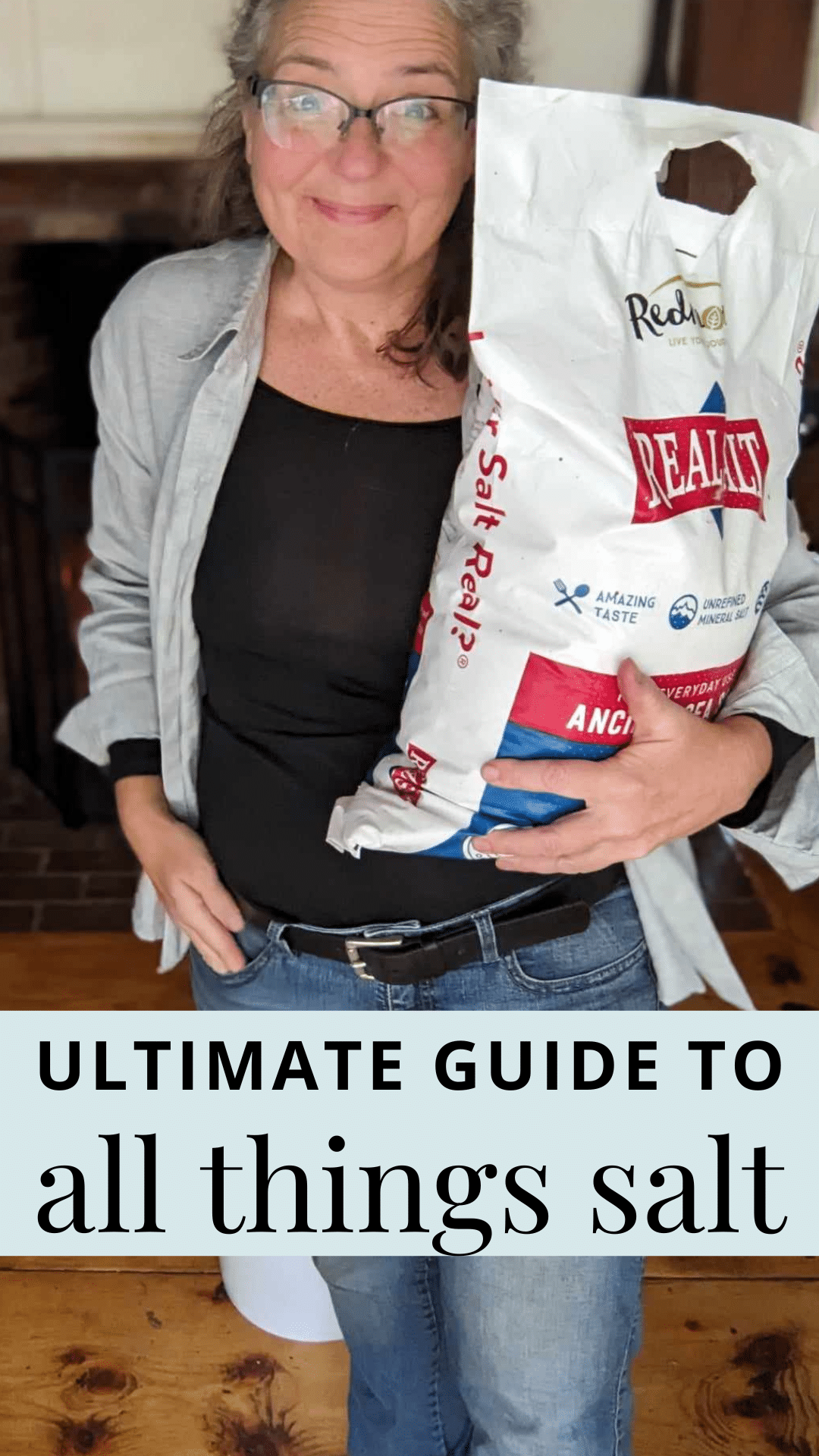

I am curious as to how you add iodine to your diet since the Redmond Real Salt does not have that mineral added to it. That’s the only thing keeping me from purchasing it.
great question! I will add just a tiny bit of sea kelp in some way, somewhere hidden, in my daily diet. I also add it to my seasoning blend or mix a little kelp with my salt. I need to write more about this, it’s a great question!